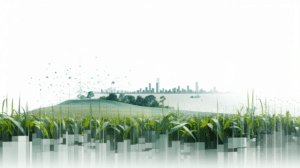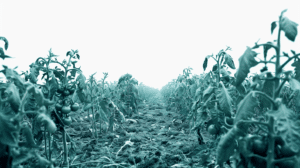Agriculture lies at the very heart of the Food & Beverage industry. Without a thriving agricultural sector, the food giants of the world would be left with empty plates. This industry is characterized with extensive supply chains and complex production processes, however without a consistent and high-quality source of ingredients, these companies would be left high and dry. Despite this interdependence, there’s a significant blindspot within these organizations when it comes to understanding what’s happening in the fields.
The agricultural blindspot within the Food & Beverage industry is a multifaceted issue rooted in several factors:
Complex Supply Chains:
Food & Beverage supply chains are intricate global networks comprising growers, distributors, and intermediaries. The journey of a single ingredient from the field to the consumer’s plate involves multiple stages, each with its set of players and processes. Information about where a particular crop was grown, the environmental conditions it was exposed to, and the practices employed in its cultivation can become fragmented and obscured as the product moves through the supply chain. This complexity makes it difficult to track the origins and conditions of ingredients. Information often gets lost in the labyrinth of middlemen.
Limited Data Sharing:
The handover of information from one party to the next in these complex supply chains is often imperfect, resulting in an information gap. In addition, many small-scale farmers, cooperatives and agricultural suppliers don’t have stable internet connection and some lack access to the technology required for efficient data sharing. This results in a dearth of real-time information about crop conditions, yield forecasts, and quality.
Climate Change:
The ever-shifting climate, characterized by extreme weather events, threatens the stability of agriculture. Droughts, floods, and heatwaves are becoming more frequent. These weather events don’t just affect individual farmers; they reverberate throughout the entire supply chain. Crop failures lead to supply shortages, which can disrupt the availability of raw materials for food and beverage companies. This, in turn, complicates risk assessment and management for these companies, as they must contend with an increasingly unpredictable and volatile agricultural landscape.
Seasonal Variability:
Agriculture is highly susceptible to seasonal changes, including unpredictable weather patterns further exacerbated by climate change, pest infestations that proliferate during certain times of the year, and disease outbreaks such as fungal, bacterial, and viral pathogens that can spread rapidly when environmental factors are conducive to their growth. These variables make it difficult for Food & Beverage companies to predict crop yields and maintain consistent product quality.
Resource Constraints:
Food & Beverage companies typically allocate their resources to marketing, distribution, and product development, often leaving a limited budget for monitoring and overseeing the agricultural supply chain.
Gaining visibility into the agricultural blindspot is not just a choice but a necessity for Food & Beverage companies. Understanding the conditions in which crops are grown is an essential cornerstone for ensuring product quality and safety. This is not just a matter of taste or aesthetics; it’s a fundamental part of safeguarding consumers from foodborne ilflnesses and protecting against costly product recalls that can severely damage a brand’s reputation.
As part of the quality aspect, consumers are increasingly attuned to the environmental and ethical implications of their purchases. They demand products with transparent, ethical, and sustainable sourcing practices. Visibility into the agricultural supply chain enables companies to meet these demands, which can enhance their market appeal.
Agriculture is subject to countless variables, from unpredictable weather patterns to pest infestations and disease outbreaks. The changing climate exacerbates these uncertainties, resulting in crop failures and supply chain disruptions. Gaining visibility into the agricultural process is a proactive strategy that helps companies identify and mitigate these risks. It’s about ensuring business continuity and reducing financial uncertainty, thereby protecting both the company and its consumers.
Real-time data on crop conditions and yields enable companies to optimize their production processes, reducing waste and improving resource allocation. This results in significant cost savings, enhancing overall profitability.
Food & Beverage companies need to strategize, and create a clear plan on how to accomplish visibility into it’s agricultural supply chain. Firstly, collaborating with agricultural stakeholders, which encompasses farmers, cooperatives, and suppliers, will play a pivotal role in promoting data sharing and fostering transparency. This approach will result in a consistent flow of information throughout the supply chain, offering a more comprehensive understanding of the agricultural processes.
Implementing advanced technologies that both support data collection from various sources and incorporate data analytics, particularly advanced analytics and machine learning, proves essential for managing the vast amount of data. This technology not only processes the data but also interprets it, facilitating better decision-making and streamlining through the supply chain.
Additional supply chain transparency initiatives, such as supplier audits, certification programs (Fair Trade and Organic are just two examples) and collaberative partnerships with NGOs and advocacy groups in sustainable sourcing areas, strengthen trust and elevate brand reputation. By creating a more transparent and collaborative ecosystem, companies can not only improve their internal processes but also align with the values and expectations of today’s conscious consumers.
In summary, the future success of the Food & Beverage industry depends on embracing technology, collaborating with stakeholders, and adopting transparency to enhance their agricultural supply chain. By doing so, these companies can not only safeguard their products and enhance overall profitability, but also contribute to the broader goal of a more sustainable and resilient food system.
Bridging the agricultural blindspot is not just a choice, it’s an imperative for a thriving future.








